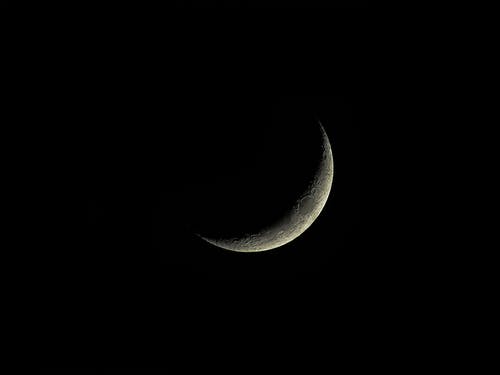NOUMENIA
It is a new year: a space that is simultaneously void and pregnant with potential. And so we stand, suspended in expectation of who we will be and what it will bring. Just a few days ago the calendar saw the transition from the last day of the previous month to the first of this month. Astronomically speaking it means that the old moon has disappeared but the new moon – noumenia – has not yet appeared. In actual fact it has appeared but as the moon passes between the sun and the earth on its orbit, it is invisible to the naked eye. In other words the new moon does in fact appear but it is invisible, hence the modern-day term black moon. It is only when the new (black) moon becomes a waxing crescent moon that we can see it in our night sky.
The Greeks described this astronomical idea with the phrase ‘old and new’ (ene kai nea), when the old disappears and the new is yet to properly materalise. In many ways we are currently in that stretch of space, freshly out of the old year and in our new and as yet, invisible year. We are yet to experience our new moon grow in the coming months. This is why this space is so pregnant with potential – because we are in noumenia, our black and invisible moon. Anything is possible.
Not long ago we spoke about ideas as threads that have their origins and trajectories, so let’s follow the thread of noumenia to see what we will find. The astronomical noumenia is related to noos (‘mind’), and noein (‘to apprehend or perceive by the mind’) and from that we get noumenon (singular): that which we think about, an object of the mind. So we find that Plato defines noumena (plural) as things we can grasp with our minds, as opposed to phenomena which we can grasp with our senses.* It is easy to see how the astronomical meaning of an invisible moon comes to mean something that is ‘invisible’ for our senses. According to Plato, noumena are things as they really are, and phenomena are things as they appear to be; he encourages his listeners to move beyond the level of appearances and deal with things at the level of the truth of what they really are.* This leads me to the following thought.
What are we to do when the old is gone and we wait in our black moon, our noumenia? What are we to do in this suspended space? What could be the purpose of this time, how could we use it well? What if we used this time to focus on the ‘invisible’ and important things to us? How would it be if we asked ourselves some of the difficult questions we have been avoiding? How would it be if we dared to honestly articulate what we want of and for ourselves in the coming year? How would it be if we did not rush ourselves into our crescent moon before it actually appears, but decided to simply be in this space of expectation, curiously and contentedly?
I realise ‘curiously and contentedly’ is not possible for everyone this time of year. Tragedies strike when we least expect them to and perhaps your black moon is more black than anything else. Instead of being a time of hope and joyful anticipation, you may be in pain and agony, confused and disoriented. Perhaps you are wondering if there is anything beyond the blackness of your noumenia, whether or not your moon will ever grow and shed light on your dark corner.
The truth is, no matter what our circumstances, at this point none of us have any idea what our noumenia will bring. The year will reveal what it will and much of that is out of our control; what we can do, however, is decide what we want to do with where we are. Could we contemplate the truth of who we are, the lives we are living, the lives we want to live? Could we then move to align ourselves with what we discover as we do? Whether you are feeling the ‘black-ness’ of your noumenia or its beautiful potential, could you find a way to be open and trusting in this invisible tension?
What is now our black moon will undoubtedly grow to become our visible crescent until it reaches its glorious fullness. And the beauty of all this is that our year actually consists of twelve noumenia (sometimes even thirteen!). Each month we will have the opportunity to be in our black moon, full of potential and possibility, and have the power to shape our story as it unfolds. As we embark on a new journey together this year I wish you a beautiful and rich noumenia.
* I will not go into detail about this distinction and to which degree it may or may not be valid, but let’s run with it for now.
** This complex (and not uncomplicated!) idea is picked up and developed centuries later by German philosopher Immanuel Kant (1724-1804) where noumenon becomes known as das Ding an sich.
See Sacha Stern (2012) Calendars in Antiquity for more information about ancient calendars in Greece, Mesopotamia, Egypt and the Levant.
(c) Belinda É. Samari
RECOMMENDATIONS
ONLY ACCESSIBLE TO THE CREATIVE EXPEDITION CREW.
For those of you who are part of the creative expedition, be sure to check out my other recommendations in your newsletter. If you are not already part of the crew, join the creative expedition (bar at the top of this page) and regularly receive inspiring, informative and practical content in your inbox. Experience the full benefit of the journey!

